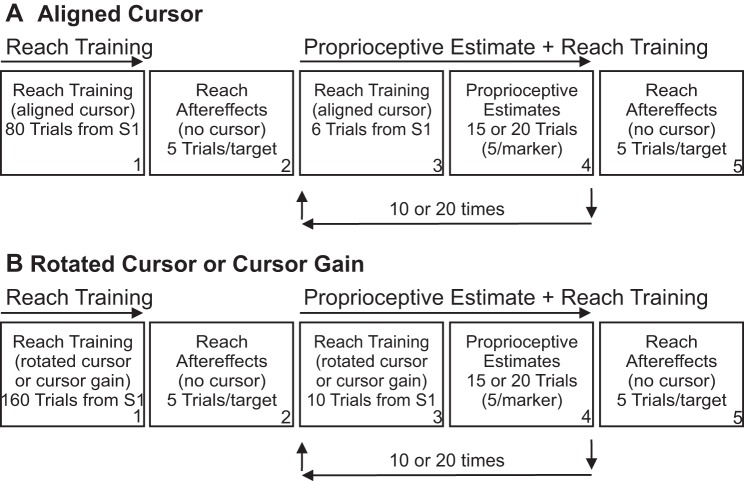Fig. 2.
Breakdown of testing sessions within the experiment. In the first testing session (A), subjects reached with an aligned cursor that accurately represented the position of their hands to the 45° reach training target. In the second testing session (B), subjects reached with a misaligned cursor that was either rotated 45° clockwise with respect to the actual hand location during the reach training trials or moved to a greater (1.5 times: Cursor Increase) or lesser (0.67 times: Cursor Decrease) amount than the hand. After completing the reach training trials with an aligned (box A1) or misaligned (box B1) cursor, subjects reached to each no-cursor reach target 5 times without a cursor in order to assess generalization of reach adaptation (reach aftereffect trials, boxes A2 and B2). Subjects then completed 6 or 10 more reach training trials to the reach training target with the cursor present (boxes A3 and B3) before completing the first set of 15 or 20 proprioceptive estimate trials (boxes A4 and B4). This cycle of visually guided reaches to the trained target (boxes A3 and B3) followed by proprioceptive estimates (boxes A4 and B4) was completed a total of 10 or 20 times. Subsequently, subjects reached to all no-cursor reach targets 5 times without a cursor in order to assess maintenance of reach aftereffects (boxes A5 and B5).

